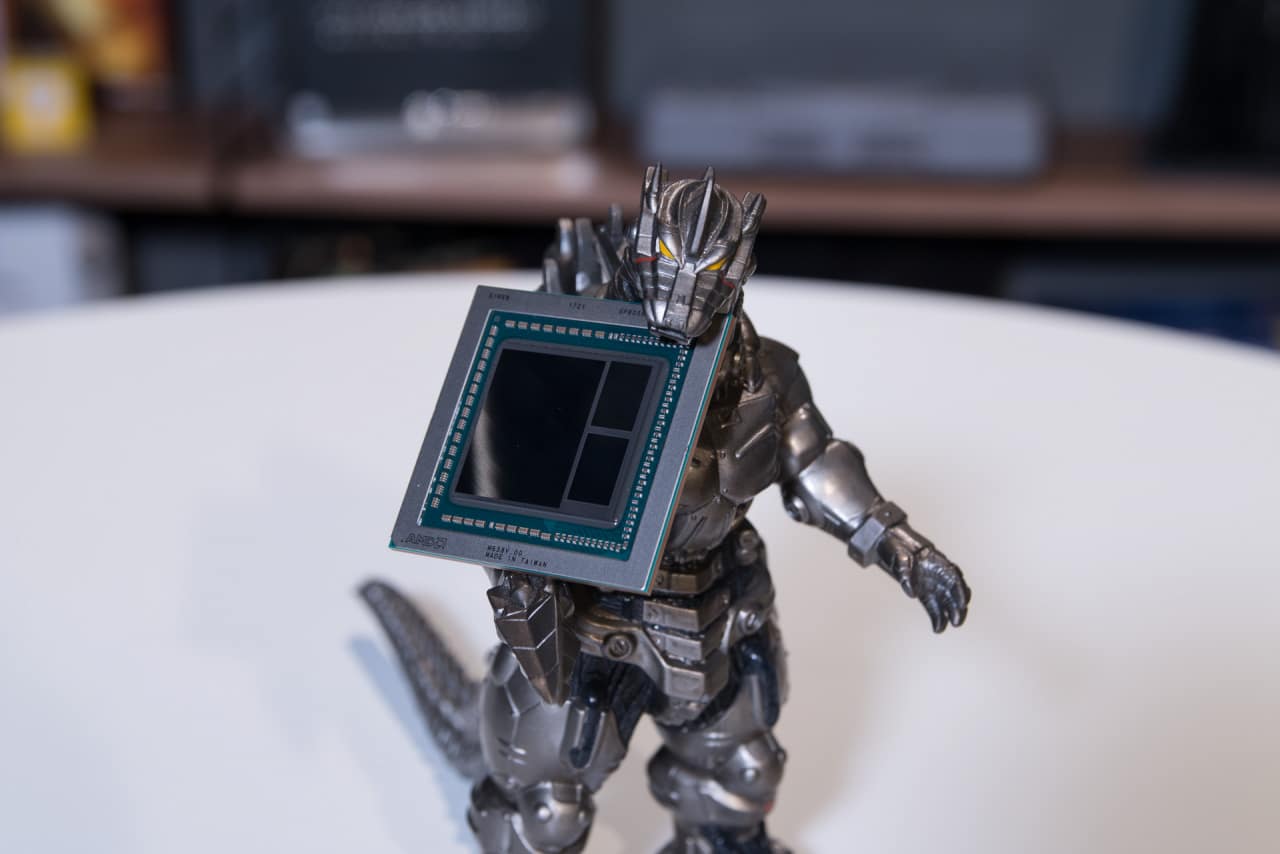The demand for memory circuits is very high and in recent years, fresh NAND and DRAM versions have gained a foothold in the market. On the NAND memory front, for example, these are SSDs with the more storage-tight QLC circuits, while several manufacturers have presented new stacked solutions.
When it comes to volatile memory, perhaps the most established addition is GDDR6, which since the summer of 2019 can be found in consumer graphics cards from both Nvidia and AMD. In the case of AMD, however, graphics cards with fast memory are nothing new, as among other things the Vega family was equipped with High Bandwidth Memory (HBM), which delivered bandwidth of 1 TB / s for the top model Radeon VII.
In FQ2, we began sampling 1Z-based DDR5 modules and are on track to introduce high-bandwidth memory in calendar 2020.
The latter type of memory has so far only been produced by Samsung and SK Hynix, ie two of the three major memory manufacturers, with Micron as the third player. Micron’s CEO Sanjay Mehrotra now announces that the company will join its competitors with proprietary HBM2 memories, which will be available in 2020.
The company’s later affiliation can partly be attributed to the fact that they invested in their own memory technology called Hybrid Memory Cube until 2018, after which GDDR6 and HBM memory were moved to the first room. At the time of writing, it is unclear which specifications and manufacturing technology apply to Micron’s HBM2 memory, but they probably match today’s market.
It should be added that the standardization body JEDEC recently updated the HBM2 standard to contain 33 percent higher bandwidth, which concretely means up to 410 GB / s per memory capsule. In the same vein, Samsung presented its own HBM2-based solution called Flashbolt, which can be overclocked for a bandwidth of 538 GB / s per capsule. It remains to be seen if Micron’s solutions are in line with Samsung or any of the updated levels.
High Bandwidth Memory was introduced with energy efficiency and high performance as arguments, but low availability and high prices meant that the standard did not break through on a broad front. Therefore, HBM2 memory is seen today mainly in high-performance solutions such as Nvidia’s Tesla V100, Quadro GV100 and other solutions for data centers, a market that in the future will have greater competition on the memory front.
Source: Micron















